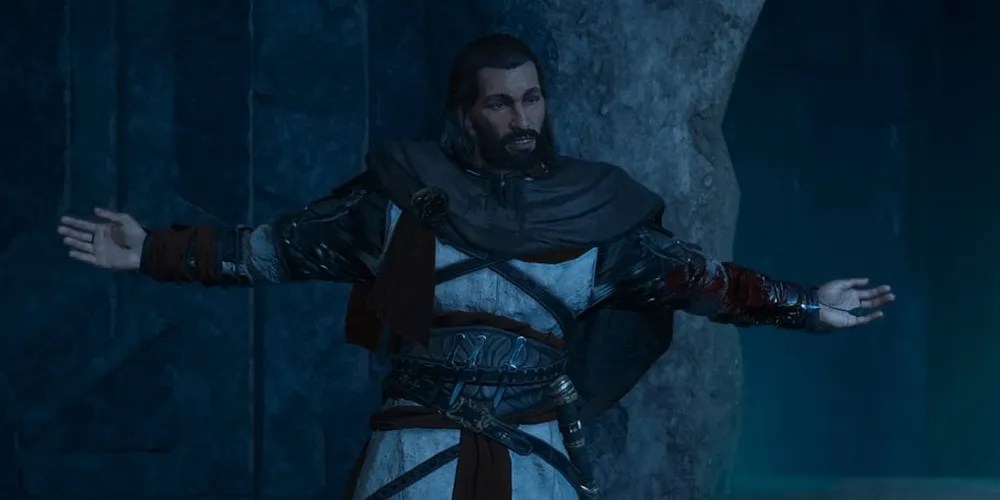Major Spoilers Ahead for Assassin’s Creed Mirage and Assassin’s Creed ValhallaThe overarching story of theAssassin’s Creedfranchise is a pretty convoluted one. While many fans just take eachAssassin’s Creedentry as its own individual story, and recognize that there are some light references and connections between some of the games,theAssassin’s Creedtimelineis actually a lot deeper than many fans realize, encompassing multiple time periods, ancient god-like beings, and more organizations that fans can shake a hidden blade at. And thoughAssassin’s Creed Miragecan definitely be enjoyed as a standalone story, its entire ending blows that notion apart, fully embracing the series' more confusing plot beats - a lot which took full shape inAssassin’s Creed Valhalla.
ThoughAssassin’s Creed Valhallastarts off as a fairly simple Viking tale, it quickly descends into mythological madness, and that mythological madness is eventually revealed to actually be a representation of ancient Isu history, a technologically advanced civilization that lived 70,000 years ago who were wiped out by a world-ending event. And being a prequel toValhalla, it’s only natural thatAssassin’s Creed Mirageleans into that confusing narrative, setting up the predecessor in a few big ways.

RELATED:Assassin’s Creed Mirage Missed a Golden Opportunity to Feature Kassandra
How Assassin’s Creed Mirage Ties into Assassin’s Creed Valhalla
InAssassin’s Creed Valhalla,players encounter a member of the Hidden Ones - a proto-form of the Assassin Brotherhood - named Basim. Alongside his apprentice Hytham, Basim works withValhalla’s protagonist Eivorfor some of the game’s story, but it’s eventually revealed that Basim has ulterior motives. At the end ofAssassin’s Creed Valhalla, it’s revealed that Basim is actually the reincarnation of the Norse god Loki, who himself was actually an ancient Isu that was imprisoned by another Isu named Odin.
Loki managed to pass on his consciousness through Yggdrasil, an Isu device that allowed a fewIsu to survive the Great Catastropheby passing down their identity through human DNA. Odin also managed to use Yggdrasil to pass on his own consciousness, which now resides in Eivor. Swearing revenge on Odin for his past discretions 70,000 years ago, Basim/Loki hunts down Eivor/Odin, but ends up getting trapped inside of Yggdrasil after the two come to blows.
Assassin’s Creed Miragesets up these moments in a few big ways. Early on inMirage, players can encounter aTale of Baghdad side mission, in which they’ll come across a boy trying to impress his friends by performing a leap of faith. After watching Basim perform one, the young boy jumps off the tower, and after stating that his name is Hytham, Basim tells the boy to seek him out when he’s old enough, thus setting up their mentor-apprentice relationship inValhalla.
Of course,Assassin’s Creed Valhalla’s Basim/Loki twistis the biggest element thatMiragesets up, and most of it comes right at the game’s conclusion. After wiping out the Order of the Ancients in Baghdad, Basim returns to Alamut Castle and finds a secret chamber beneath the hideout. Basim uses his blood to open the chamber, and discovers an ancient Isu prison, filled with Memory Seals. Basim uses these Seals to discover memories of his past life as Loki, and realizes that the Jinni that’s been haunting his dreams has actually been memories of Loki’s torture at the hands of Odin all those years ago. Basim chooses to fully embrace his past identity, and becomes the full reincarnation of Loki. The final line of dialogue inAssassin’s Creed Mirage’s story is Basim promising to find those who would seek to bind him, directly setting up his quest inAssassin’s Creed Valhalla.
Assassin’s Creed Mirageis available on PC, PS4, PS5, Xbox One, and Xbox Series X.
MORE:Assassin’s Creed Mirage: The Pros and Cons of its Investigation System vs. a Cultist Tree